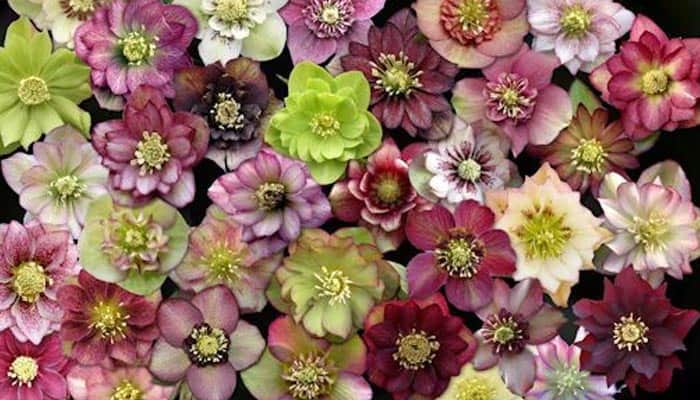Plant Now for a Winter Miracle by Anne Halpin
Summer is in the rearview mirror, and all too soon autumn will be winding down. Winter waits in the wings. For those of us who live here year-round, wouldn’t it be wonderful if we could have plants in bloom in the winter? That winter miracle is entirely possible…even easy to attain. Discover a magical perennial plant that sets its flower buds after Thanksgiving and blooms…yes, blooms…in late winter to earliest spring, way before the crocuses and daffodils. Flower lovers, meet the hellebores. Hellebores are evergreen perennial plants that really do develop their buds in late fall, hold them over the winter and unfurl them in February or March here. And then hold onto them for a couple of months until they finally begin to fade and dry.
These plants are heroes. Snow does not bother them. During the endless snows and cold of last winter, mine were buried under a foot of snow for at least six weeks, and when the snow finally melted they were there, with their leaves and flower buds intact and none the worse for wear. As if that isn’t reason enough to love hellebores, deer don’t bother them, nor do voles—both notorious plunderers of East End gardens. And the flowers are utterly beautiful.
There are many hybrid hellebores available, many bred from the Lenten rose, Helleborus orientalis. That plant, pretty but modest, is about 18 inches high and bears clusters of downward-facing, cup-shaped creamy white flowers a couple of inches across. But the descendants of the Lenten rose have bigger flowers that come in a host of colors, ranging from white and cream through shades of palest pink to bright rose, as well as deep maroon to dramatic purple-black. There are hellebores that bloom in shades of chartreuse and salmon, and varieties with petals edged or speckled or flushed with a second, contrasting color. The hellebore spectrum is expanding all the time. The extraordinarily beautiful flowers have five broad, pointed petals arranged a center of prominent yellow stamens. There are now varieties with double or even triple the original number of petals. The flowers are set off against medium to deep green, leathery oblong leaves that cluster in a whorl around a central point on the stem.
Hellebores may form clumps over time, but they’re not invasive spreaders. And they are ridiculously easy to grow. Give them a spot in partial to light shade (they won’t thrive in full, blazing sun or deep shade. They prefer soil that is evenly moist, although they become reasonably drought tolerant when they are well established. Add some compost to the soil before you plant, and spread some around the plants each spring. If the oldest leaves look tattered after winter, cut them back top neaten up the plants and encourage new growth. Unlike many other perennials, hellebores should not be cut back in fall.
You may find a limited selection of plants in local nurseries in spring, but there are many choices available from online sources. Three good ones are Plant Delights Nursery (plantdelights.com, 919.772.4794), Sunshine Farm and Gardens (sunfarm.com) and White Flower Farm (whiteflowerfarm.com, 800.503.9624).








